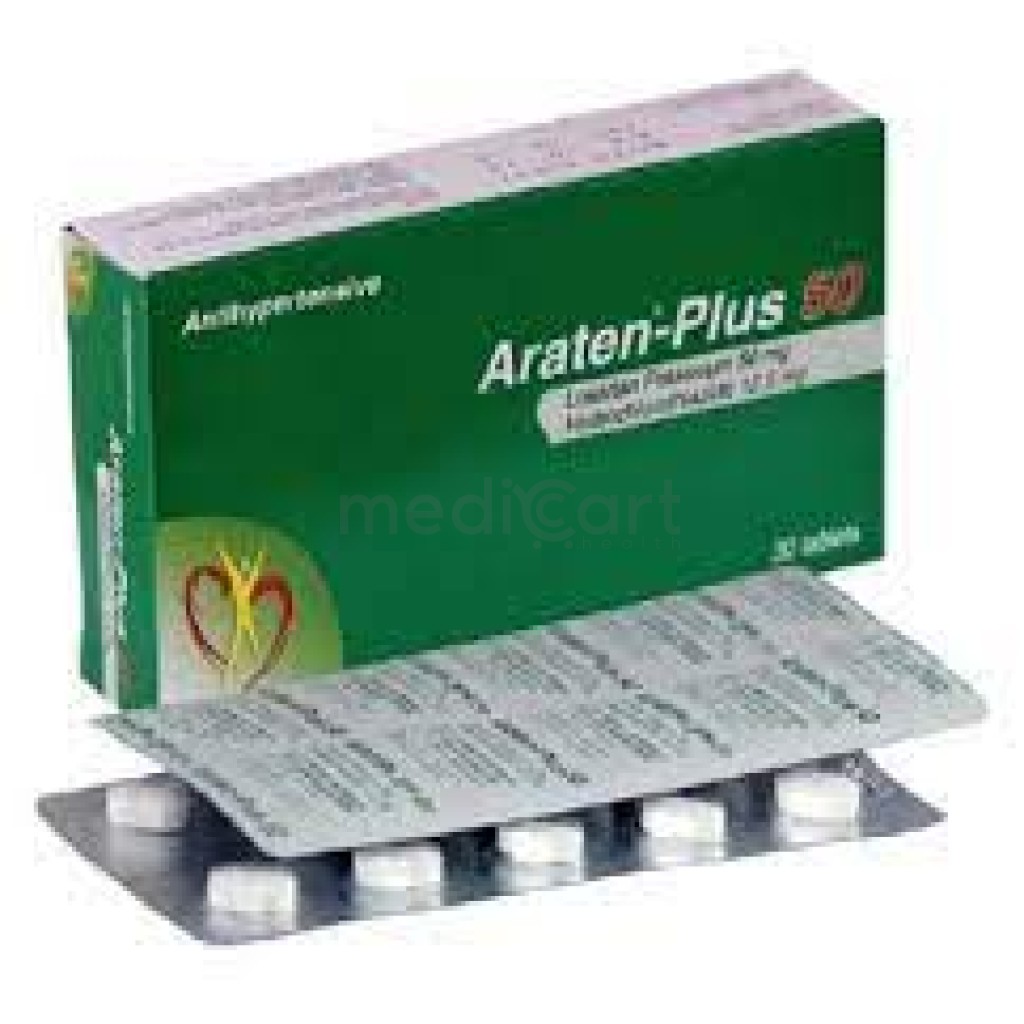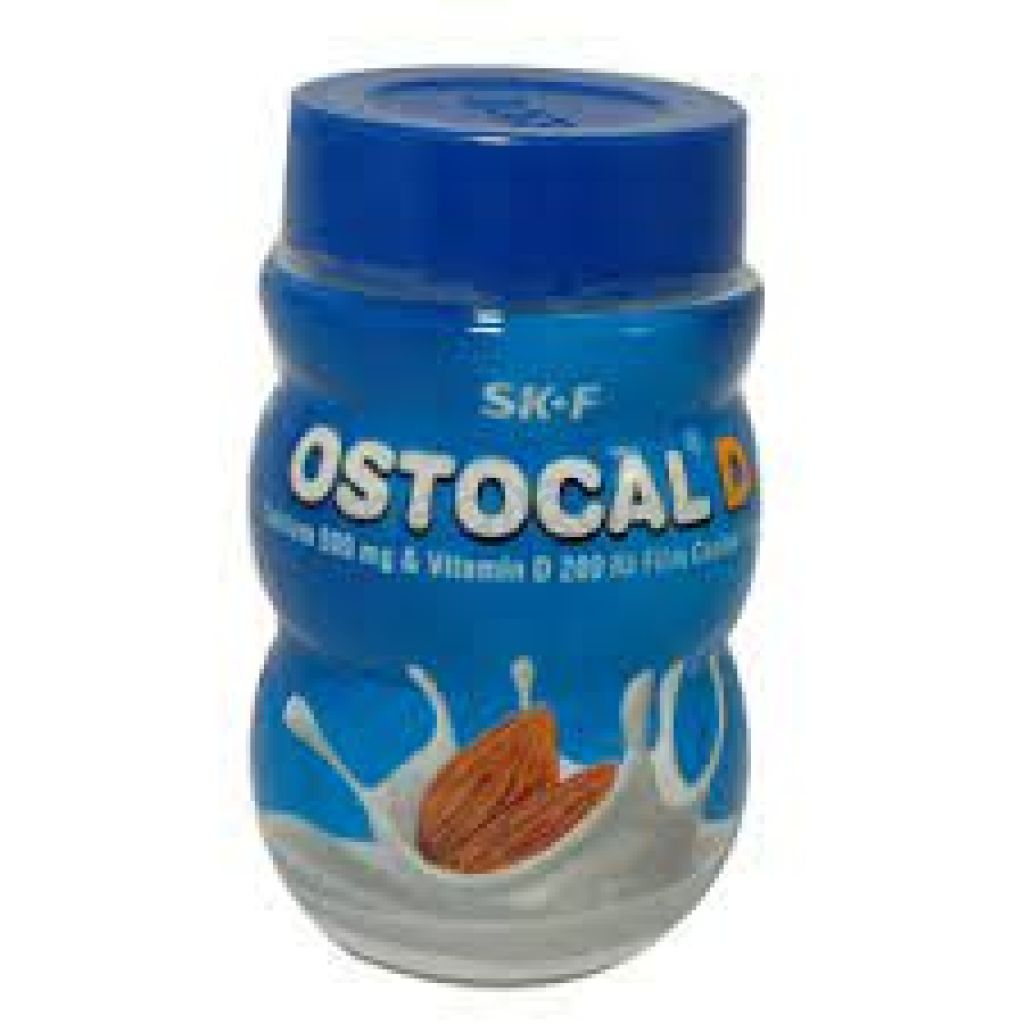

Araten PLUS 12.5mg + 50mg
Tablet* Delivery will be done in Dhaka city only.
Alternative Product
More Information About - Araten PLUS 12.5mg + 50mg
Description
Generic Name
Hydrochlorothiazide + Losartan Potassium
Precaution
Existing electrolyte disturbances; hepatic cirrhosis; severe hepatic failure; oedema; elderly (>75 yr); renal impairment; hepatic impairment; diabetes, gout, hyperlipidaemia; hyperuricaemia; ECG: LVH and/or ventricular ectopics extrasystoles); volume depleted patients; patients on diuretics and salt restriction; renal artery stenosis; aortic and mitral stenosis. Monitor potassium concentration. Discontinue before performing tests for parathyroid function. Lactation: Discontinue drug or do not nurse
Indication
Hypertension, Stroke, risk reduction of hypertensive or LVH patients
Contra Indication
Pregnancy, lactation; intravascular volume depletion.
Dose
N/A
Side Effect
>10% Losartan Fatigue (14%),Hypoglycemia (14%),Chest pain (12%),Cough, incidence higher in previous cough related to ACE therapy (3-11%) 1-10% Losartan Diarrhea (2-10%),URI (8%),Hypotension (7%),Dizziness (4%),Nausea (2%) Hydrochlorothiazide Hypotension,Anorexia,Epigastric distress,Hypokalemia,Phototoxicity,Thrombocytopenia Potentially Fatal: Hypersensitivity reactions; hemolytic anaemia; toxic epidermal necrolysis.
Pregnancy Category
Name : Not Classified
Description
FDA has not yet classified the drug into a specified pregnancy category.Mode of Action
Hydrochlorothiazide increases renal excretion of sodium and chloride and reduces cardiac load. Losartan is an angiotensin II receptor (type AT1) antagonist antihypertensive which acts by blocking the actions of angiotensin II of renin-angiotensin-aldosterone system. The drug and its active metabolite selectively block the vasoconstrictor and aldosterone secreting effects of angiotensin II. The two drugs exert additive effects in hypertension.
Interaction
Reduced excretion of lithium; effect of diuretic, natriuretic & other antihypertensive w/ NSAIDs including selective COX-2 inhibitors. Do not co-administer w/ aliskiren in patients w/ diabetes & renal impairment. Losartan: Rifampin & fluconazole. Increased serum potassium w/ K-sparing diuretics (eg spironolactone, triamterene, amiloride), K supplements or salt substitutes containing K. Hydrochlorothiazide: Potentiate orthostatic hypotension w/ alcohol, barbiturates or narcotics. Antidiabetic drugs (oral agents, insulin), other antihypertensive drugs. Impaired absorption w/ cholestyramine & colestipol resins. Intensified electrolyte depletion w/ corticosteroids, ACTH, glycyrrhizin (liquorice). Possible decreased response to pressor amines (eg adrenaline); increased response to nondepolarizing skeletal muscle relaxants (eg tubocurarine). May interfere w/ parathyroid function test.
Pregnancy Category Note
Pregnancy Therapy can cause fetal harm when administered to a pregnant woman; use of drugs that act on renin-angiotensin system during second and third trimesters of pregnancy reduces fetal renal function and increases fetal and neonatal morbidity and death Most epidemiologic studies examining fetal abnormalities after exposure to antihypertensive use in first trimester have not distinguished drugs affecting renin-angiotensin system from other antihypertensive agents; when pregnancy is detected, discontinue therapy as soon as possible Hypertension in pregnancy increases maternal risk for pre-eclampsia, gestational diabetes, premature delivery, and delivery complications (eg, need for cesarean section, post-partum hemorrhage) Hypertension increases fetal risk for intrauterine growth restriction and intrauterine death; pregnant women with hypertension should be carefully monitored and managed accordingly Fetal/neonatal adverse reactions Losartan Use of drugs that act on the renin-angiotensin system in second and third trimesters of pregnancy can result in oligohydramnios, reduced fetal renal function leading to anuria and renal failure, fetal lung hypoplasia, skeletal deformations, including skull hypoplasia, hypotension, and death In the unusual case that there is no appropriate alternative to therapy with drugs affecting the renin- angiotensin system for a particular patient, apprise the mother of the potential risk to the fetus Perform serial ultrasound examinations to assess the intra-amniotic environment; if oligohydramnios is observed, discontinue therapy, unless it is considered lifesaving for the mother Fetal testing may be appropriate, based on week of gestation Patients and physicians should be aware, however, that oligohydramnios may not appear until after fetus has sustained irreversible injury; closely observe neonates with histories of in utero exposure to drug combination for hypotension, oliguria, and hyperkalemia In neonates with a history of in utero exposure to drug combination, if oliguria or hypotension occurs, support blood pressure and renal perfusion Exchange transfusions or dialysis may be required as a means of reversing hypotension and replacing renal function Hydrochlorothiazide Thiazides can cross placenta, and concentrations reached in umbilical vein approach those in maternal plasma Like other diuretics, the drug can cause placental hypoperfusion; it accumulates in amniotic fluid, with reported concentrations up to 19 times higher than in umbilical vein plasma Use of thiazides during pregnancy is associated with a risk of fetal or neonatal jaundice or thrombocytopenia Since they do not alter the course of preeclampsia, these drugs should not be used to treat hypertension in pregnant women The use of hydrochlorothiazide for other indications in pregnancy should be avoided Lactation Not known whether losartan is excreted in human milk, but significant levels of losartan and its active metabolite were shown to be present in rat milk; thiazides appear in human milk; because of potential for adverse effects on nursing infant, a decision should be made whether to discontinue nursing or discontinue drug, taking into account importance of drug to mother
Adult Dose
Hypertension Initial: 50 mg/12.5 mg PO qDay If dose titrated upward, do not to exceed final titration of 100 mg/25 mg PO qDay or 50 mg/12.5 mg PO q12hr Decrease losartan to 25 mg PO qDay initially if volume depleted
Child Dose
Safety and efficacy not established
Renal Dose
Renal impairment CrCl <30 mL/min: Do not use thiazide-containing products; loop diuretic preferred CrCl >30 mL/min: No dosage adjustment required
Administration
N/A
Disclaimer
The information provided herein are for informational purposes only and not intended to be a substitute for professional medical advice, diagnosis, or treatment. Please note that this information should not be treated as a replacement for physical medical consultation or advice. Great effort has been placed to provide accurate and comprehensive data. However, Medicart along with its authors and editors make no representations or warranties and specifically disclaim all liability for any medical information provided on the site. The absence of any information and/or warning to any drug shall not be considered and assumed as an implied assurance of the Company.









